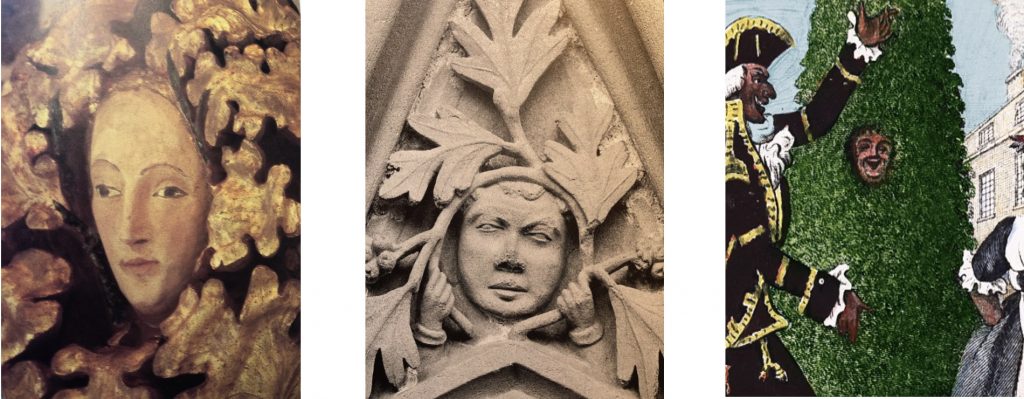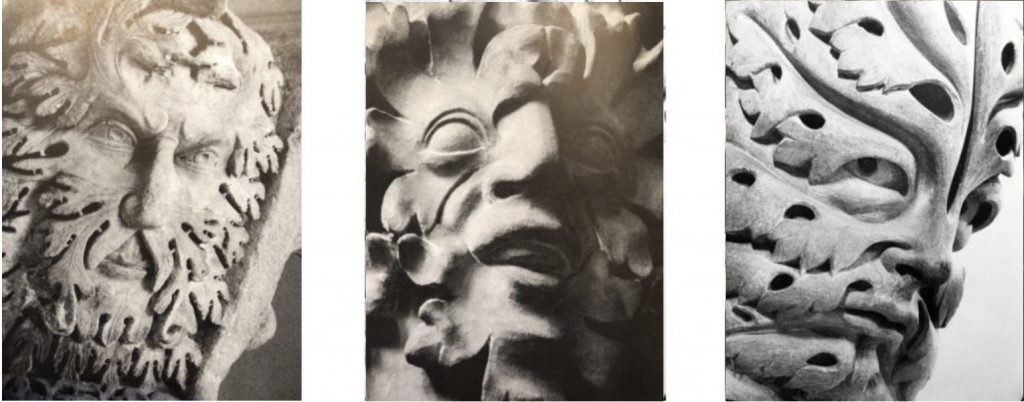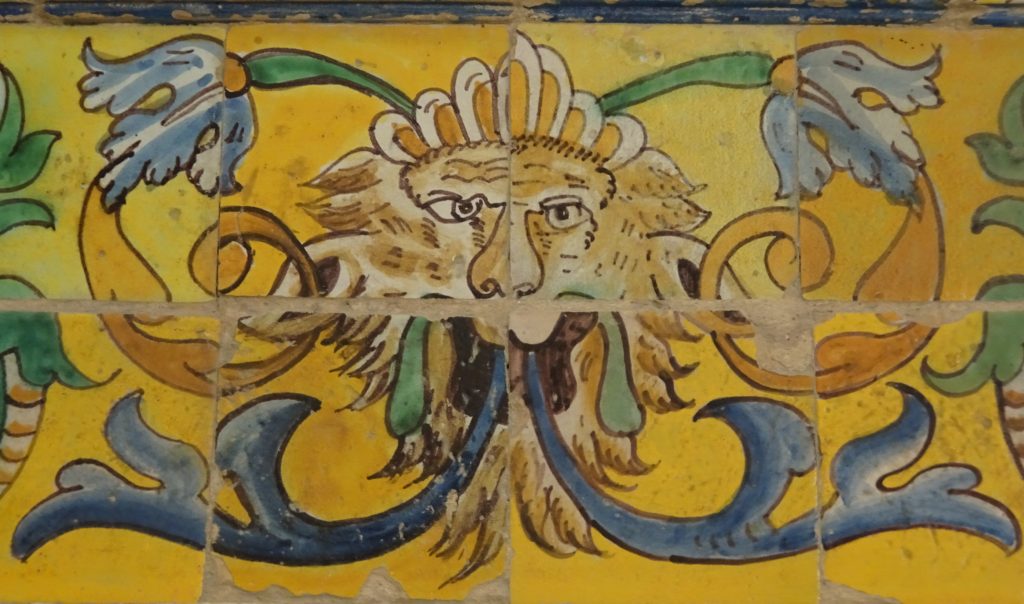With hundreds, perhaps thousands of stonemasons carving Green Men in churches across Western Europe for several hundred years there was bound to be a lot of variation but there are three main styles*:
1. Plain Faces in Greenery: This shows a human face (a few are female but women’s faces seem only to appear in these Plain Face versions) simply peering out through a mass of encircling foliage. The face and the greenery are quite distinct and separate elements of the design so there is no doubt there is a human face surrounded by foliage. There is a modern tendency incorrectly to conflate the Green Man and Jack In The Green and the image below right shows how confusion could arise as early Jacks had holes though which the carrier’s face could be seen. Lady Raglan in her article about the Green Man acknowledged the similarity between the Southwell example below centre and the Jack in The Green below right. Most current Jack’s have replaced the opening with masks.
Below Left: Exeter C14th Below Centre Southwell circa 1290 Below Right: Jack In The Green 1795

2. Metamorphic or Tete de Feuilles Faces: The human and foliage elements are fused into one organic whole so it is hard to decide if it is a human face changing into greenery (e.g. below left from Istanbul), or a foliage face changing into a human one (e.g. below right from Bamburg, Germany) or something in-between (e.g. below centre from Lichfield). The faces can be a little disturbing because of the ambiguity of what you are seeing.

Sevilla Cathedral has numerous metamorphic carvings dating from between 1401 and 1506

3. Foliage or Masque Feulli Faces (occasionally called Masque Herbu): In these the greenery is actually sprouting out of the face’s mouth, nose and even eyes. They look intimidating and un-natutal. The examples below are from (left to right) Sutton Benger, Llangwm and Ottery St Mary. The coloured tiles date from 1577 and are in the Alhambra, Granada.


*Sources: Green Man by Anderson & Hicks and The Green Man by Basford